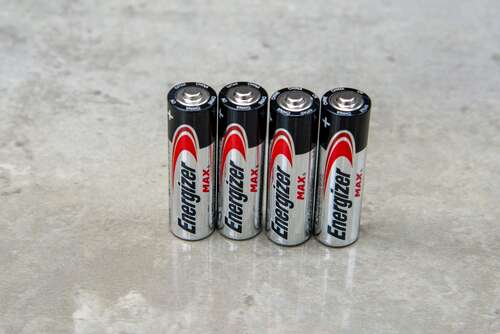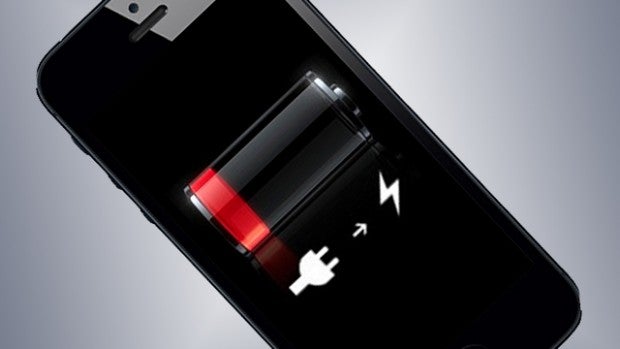The humble battery is often forgotten, yet it’s easily one of the most important items you can keep in your home. Powering everything from remote controls to torches, and even household necessities such as smoke alarms, batteries really do help keep your home running.
Although rechargeable batteries may be more of a popular option, as they offer better value over their lifespan and are better for the environment, a disposable set of alkaline AA or AAA batteries is incredibly convenient. Unlike rechargeable batteries, disposable batteries don’t lose charge while not in use, making them dependable in an unexpected emergency.
When choosing a disposable battery, you want to make sure that you’re getting the best possible model, with the longest lifespan and most power available. This is where we come in.
We test all batteries thoroughly, first by measuring their total capacity via a dedicated battery tester. We then consider and measure the use-cases a battery may be put through. For example if the battery is put through a high drain for devices that use a lot of power quickly, or a low drain for devices that use smaller amounts of power.
We also consider the price of batteries and whether the price is reasonable for what you get in return.
If you do prefer using a rechargeable option, then make sure you check out our list of the best rechargeable batteries.
How we test
We test four batteries from the same manufacturer and then average the results. We test all alkaline batteries using an Ansmann Energy XC 3000 battery tester. Using this, we first test that the batteries have a starting voltage of t least 1.5V.
Next, we measure capacity in mAh (milliamp hours), which is a standard rating for batteries. Our battery tester discharges batteries with a 600mA load (+/-20%) and stops when the voltage hits 0.94V. After an initial test, we give the batteries an hour to cool down, and then run the test again to see if there’s any additional charge.
We present all three figures: initial capacity, capacity after the second drain, and the final total capacity. The first figure tells us how good the battery is under high-drain loads, such as games controllers and torches; the total figure tells us how much capacity the battery holds and how useful it is for low-drain use, where not much power is required, such as for remote controls.
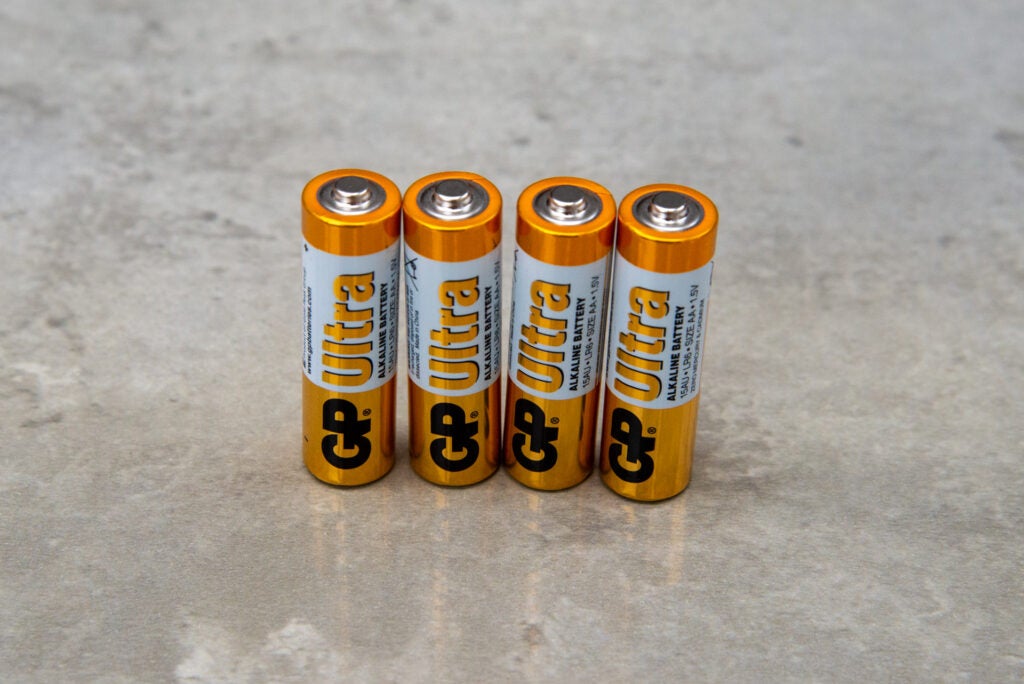
GP Ultra AA
The best overall AA batteries
Pros
- Low price
- High capacity
- Available in wide range of pack sizes
Cons
- Higher drain batteries available
If you’re looking for truly versatile AA batteries that are designed for all types of use and are good value for money then you can’t go wrong with the GP Ultra AA series. According to the company, the GP Ultra batteries have a service life of 19.5 hours, based on a 10-Ohm discharge resistance. They have a shelf life of up to 10-years too.
In our tests we found that these batteries delivered a total capacity of 1680.5mAh, which is still some of the highest we’ve seen. This makes the GP Ultra AA well suited for both low-drain and high-drain uses.
A low drain use could be a remote control or an alarm clock, where power is slowly used over a longer period, whereas a high drain is for video game controllers or toys.
If you want to keep a set of batteries in the cupboard as a back-up, then the GP Ultra AA are currently the best option around.
Full review: GP Ultra AA review
Reviewer: David Ludlow
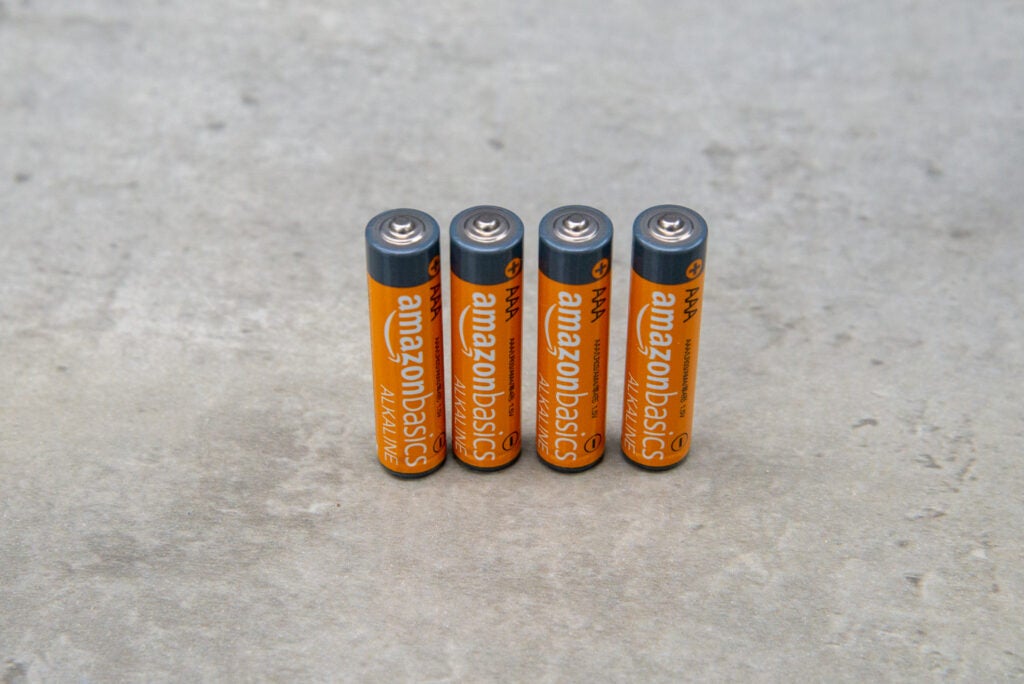
Amazon Basics Alkaline AAA
The best AAA batteries
Pros
- Excellent high-drain performance
- High capacity
- Low price
When we tested AAA batteries, we were expecting a similar spread of results to the AA models, but we were wrong: the Amazon Basics Alkaline AAA batteries were by far the best at everything in our tests.
We performed an initial drain test and found that the batteries held 559.75mAh, which was highest by a lot. Running a second drain test after the batteries had cooled down, we found that they held an additional 25.25mAh, for a total of 585mAh. That’s second overall, but only 12mAh less than the GP Ultra AAA batteries.
That shows that pretty much the full capacity can be used by high drain devices, such as games controllers, toys and torches. Yet, the overall capacity is high, making these batteries suitable for low-drain uses, such as remote controls, where longevity is important.
The other batteries that we tested just weren’t as good: they had much lower results in the initial result, and most had lower overall capacities. That makes the Amazon Basics Alkaline AAA batteries the best overall at everything.
Full review: Amazon Basics Alkaline AAA review
Reviewer: David Ludlow
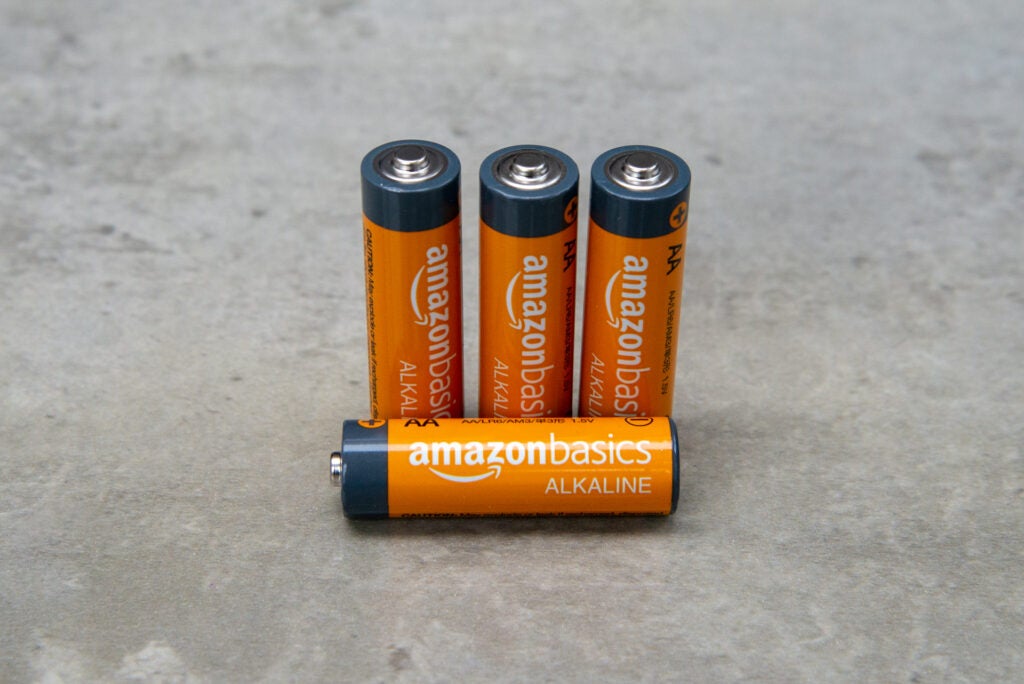
Amazon Basics Alkaline AA
The best budget AA batteries
Pros
- High capacity
- Perform well under high loads
- Excellent value
Cons
- Amazon doesn’t quote detailed specs
The word ‘budget’ often has bad connotations, but the Amazon Basics Alkaline AA batteries avoid that trap. While these are undoubtedly cheap batteries, particular when bought in bulk.
Running these batteries through our normal tests, we measured them with an initial capacity of 1376mAh, which is only slightly behind the Duracell Plus AA. This amount of power shows that these batteries are an excellent choice for high-drain uses, such as torches and toys.
We then ran the batteries through a second drain test, which delivered an additional 219mAh, for a total capacity of 1595mAh, which is only just behind the GP Ultra AA batteries. That makes these batteries a good choice for lower-drain use, such as clocks and remote controls.
While the GP Ultra batteries may be slightly more flexible, if you’re on a tighter budget, these are a great choice, particularly if you want to buy in bulk.
Full review: Amazon Basics Alkaline AA review
Reviewer: David Ludlow
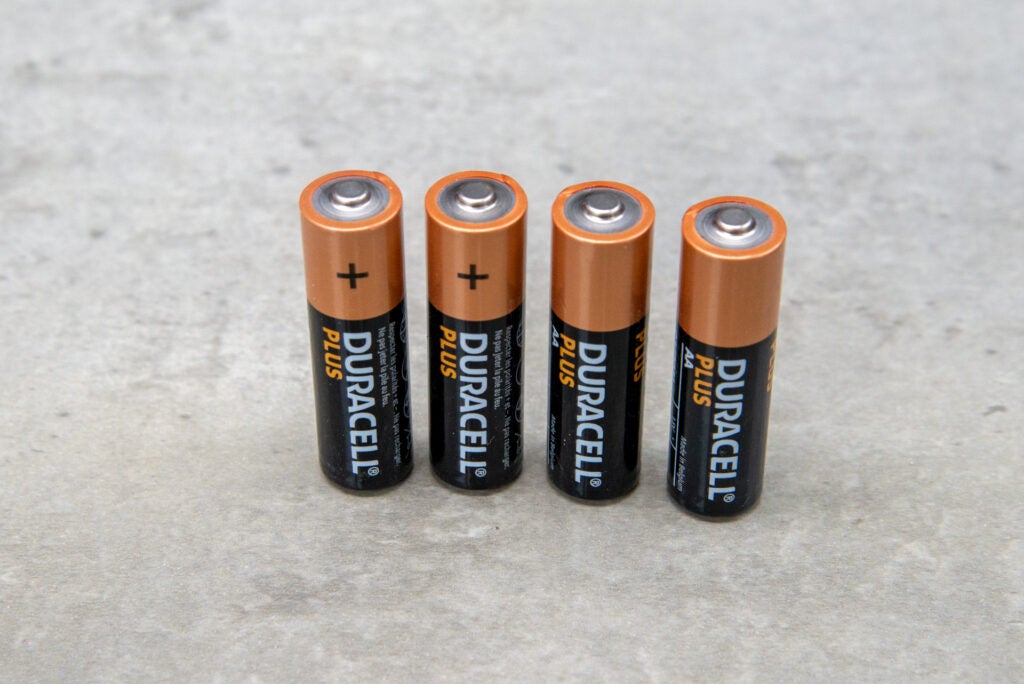
Duracell Plus AA
The best high-power AA batteries
Pros
- Very high performance
- Performs well for high-drain use
- Widely available
If it’s raw power that you want, then the Duracell Plus AA alkaline batteries are for you. These proved to be real power-houses in our tests.
Our initial drain test showed that these batteries were capable of delivering 1442mAh: this is the highest that we’ve seen. We then performed a second test after the batteries had cooled down, and they delivered an additional 176mAh, giving a total of 1618mAh.
While this makes the GP Ultra AA batteries more powerful overall, the Duracell AA’s initial result shows that these batteries are much more powerful for high-drain use, such as toys and torches. If that’s the main use that you want batteries for, then there’s nothing better that we’ve tested.
These batteries are quite expensive, and the Amazon Basics AA may be better choice if you’re on a tighter budget.
Full review: Duracell Plus AA review
Reviewer: David Ludlow
We also considered…
FAQs
Alkaline batteries hold their charge and don’t dissipate power when not in use. That’s an important consideration with devices such as smart locks: if you use rechargeable batteries, power will dissipate over time, and your lock may suddenly not work; with alkaline batteries, you’ll get a warning and a chance to replace them.
Alkaline batteries have a higher starting voltage than rechargeable models, of at least 1.5V. However, most devices that take AA or AAA cells are rated to work at lower voltages, so this generally isn’t an advantage. Besides, alkaline batteries rapidly lose voltage over use, so devices need to be able to cope with this voltage drop. That said, alkaline batteries are a requirement for some devices, such as smoke alarms.
We’ve also found that some devices can complain if rechargeable batteries are used: our smart lock warns of low battery power when we use rechargeable batteries.
Yes, it does. Most batteries will show a higher capacity when used with lower-power devices, and lower charge when used with higher capacity devices. Our results still indicate which batteries are better overall.
It’s all to do with how the batteries are created and the chemical construction. After use, a battery’s voltage will drop to the point where it can no longer be used. When left to rest, the voltage can recover, giving batteries a shorter second wind. For that reason, we test alkaline batteries twice: for an initial drain, and then again after a rest.
